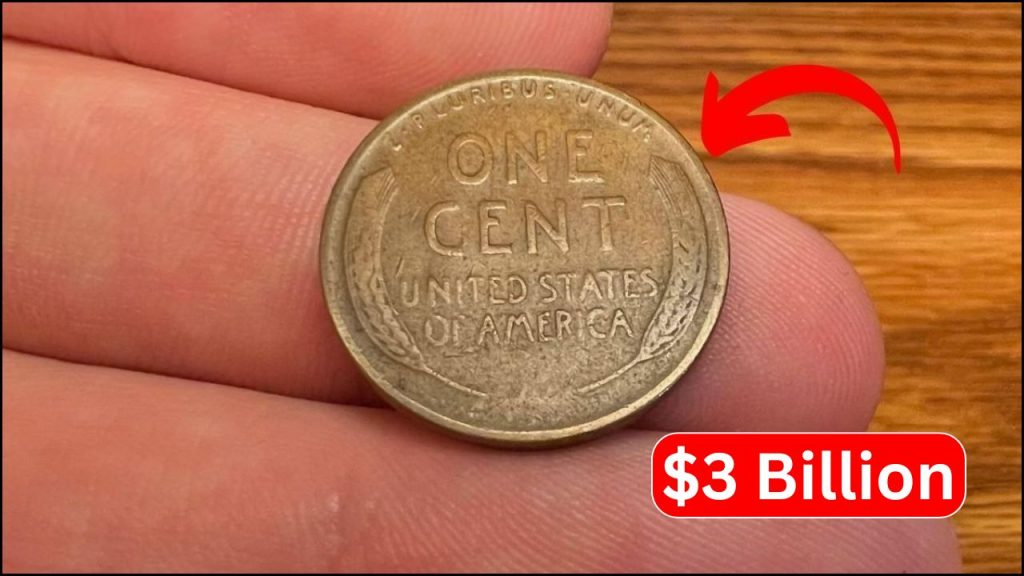
In the world of rare coin collecting, few ideas spark more intrigue than the possibility of a single penny being worth billions. While it’s not uncommon to hear about a Lincoln Wheat cent valued at thousands—or even over a million dollars—the concept of one being worth $3 billion enters a realm beyond established numismatic precedent.
Table of Contents
History of the Lincoln Wheat Penny
The Lincoln Wheat cent, minted from 1909 to 1958, was the first U.S. coin to feature a real historical figure: President Abraham Lincoln. Designed by Victor David Brenner, it was introduced during the centennial of Lincoln’s birth and became an American numismatic staple.
| Time Period | Key Features | Significance |
|---|---|---|
| 1909 | First year, includes initials “V.D.B.” on reverse | Highly sought after debut edition |
| 1909–1958 | Wheat stalk reverse design | Longest-running Lincoln cent reverse |
| 1943 | Made of zinc-coated steel | Due to WWII copper conservation |
| 1944–1958 | Return to copper | Standard alloy resumed |
| Post-1959 | Lincoln Memorial replaces wheat design | End of Wheat cent era |
Produced at Philadelphia (no mint mark), Denver (D), and San Francisco (S), billions of these coins were minted—but some anomalies have become the holy grail for collectors.
Official Lincoln cent history: U.S. Mint – Penny Facts
Most Expensive Lincoln Wheat Pennies on Record
While the $3 billion penny is purely theoretical, here are the top-valued Lincoln Wheat cents sold to date:
| Coin | Auction Price | Why It’s Valuable | Sale Year |
|---|---|---|---|
| 1943-D Bronze | $1.7 million | Extremely rare copper error during wartime steel production | 2021 |
| 1944-S Steel | $1.1 million | Incorrect metal, post-war error | 2021 |
| 1958 Doubled Die | $336,000 | Strong doubling error | 2018 |
| 1909-S VDB | $258,500 | Low mintage + controversial initials | 2018 |
| 1955 Doubled Die | $114,000 | Highly visible minting mistake | 2018 |
Visit the NGC Price Guide for updated values of Lincoln cents.
Could It Still Be in Circulation?
While fascinating, the idea of a $3 billion penny quietly sitting in someone’s pocket is statistically improbable. Most valuable errors are discovered within years of minting due to their visible anomalies.
| Detection Factor | Likelihood |
|---|---|
| Unique Appearance | High – it would likely look very different |
| Weight Difference | Easily flagged by bank machines |
| Collector Vigilance | Most error types well-known by now |
| Modern Coin Sorting | Anomalies removed by automated systems |
Still, occasional discoveries like 1943 copper cents prove that surprises do happen, often found in old collections, estates, or change jars.
How to Spot a Valuable Lincoln Wheat Cent
Even if you don’t find a billion-dollar penny, hundreds of Wheat cents are worth far more than face value. Here’s what to look for:
Key Dates & Mint Marks
| Year/Mint | Trait | Value Range |
|---|---|---|
| 1909-S VDB | First year with initials | $800 – $250,000+ |
| 1914-D | Scarce mintage | $300 – $150,000+ |
| 1922 (No D) | Missing mint mark | $500 – $50,000+ |
| 1943 Bronze | Wrong metal | $100,000 – $1.7 million+ |
| 1955 Doubled Die | Strong misprint | $1,000 – $100,000+ |
Visual Identification
- Check the Date: Found on the obverse, under Lincoln’s profile
- Check Mint Mark: Below the date (D = Denver, S = San Francisco, none = Philadelphia)
- Look for Errors:
- Doubled die (e.g. 1955, 1958)
- Off-center strikes
- Repunched mint marks
- Test Composition:
- 1943 copper = rare; test with a magnet (steel sticks, copper doesn’t)
Market Realities of Coin Values
The most expensive U.S. coin ever sold is a 1933 Double Eagle that went for around $20 million. That means a $3 billion penny would require over 100 times that valuation—something the coin market simply isn’t built to support at this time.
| Value Bracket | Coin Type |
|---|---|
| $1–$100 | Common Wheat cents |
| $100–$10K | Better date/mint mark combos |
| $10K–$100K | Rare high-grade specimens |
| $100K–$1M | National rarities |
| $1M–$10M | Top-tier historical coins |
| $10M+ | Only a handful ever sold |
| $3B | Hypothetical and unprecedented |
Why the Hunt Continues
Even without billion-dollar stakes, the excitement of discovering a hidden rarity keeps collectors engaged. Coin collecting is unique in that anyone—regardless of budget—can participate by simply checking their change.
The Lincoln Wheat penny, with its deep history and occasional ultra-rare editions, remains a favourite among seasoned numismatists and newcomers alike.
Conclusion
A $3 billion Lincoln Wheat cent remains a fantasy scenario, but the allure of discovering a valuable penny is very real. With a watchful eye and a bit of luck, your next handful of change might just contain a piece of American history worth far more than one cent.
Whether it’s a 1943 copper error or a pristine 1909-S VDB, the Lincoln Wheat cent series continues to fascinate collectors around the world.
FAQs
Q1: How do I know if my Lincoln Wheat penny is rare?
A = Look for key dates, errors like doubled dies, and mint marks. Coins in uncirculated condition are especially valuable.
Q2: Are Lincoln Wheat pennies made of precious metals?
A = Most are 95% copper. The 1943 steel cents are the exception, made of zinc-coated steel.
Q3: Where can I get my penny checked for authenticity?
A = Professional services like PCGS, NGC, and ANA offer expert grading and authentication.
Q4: Is it possible to find a valuable penny in circulation today?
A = Yes—valuable coins are still occasionally found in everyday change, especially from estate sales or old coin jars.








